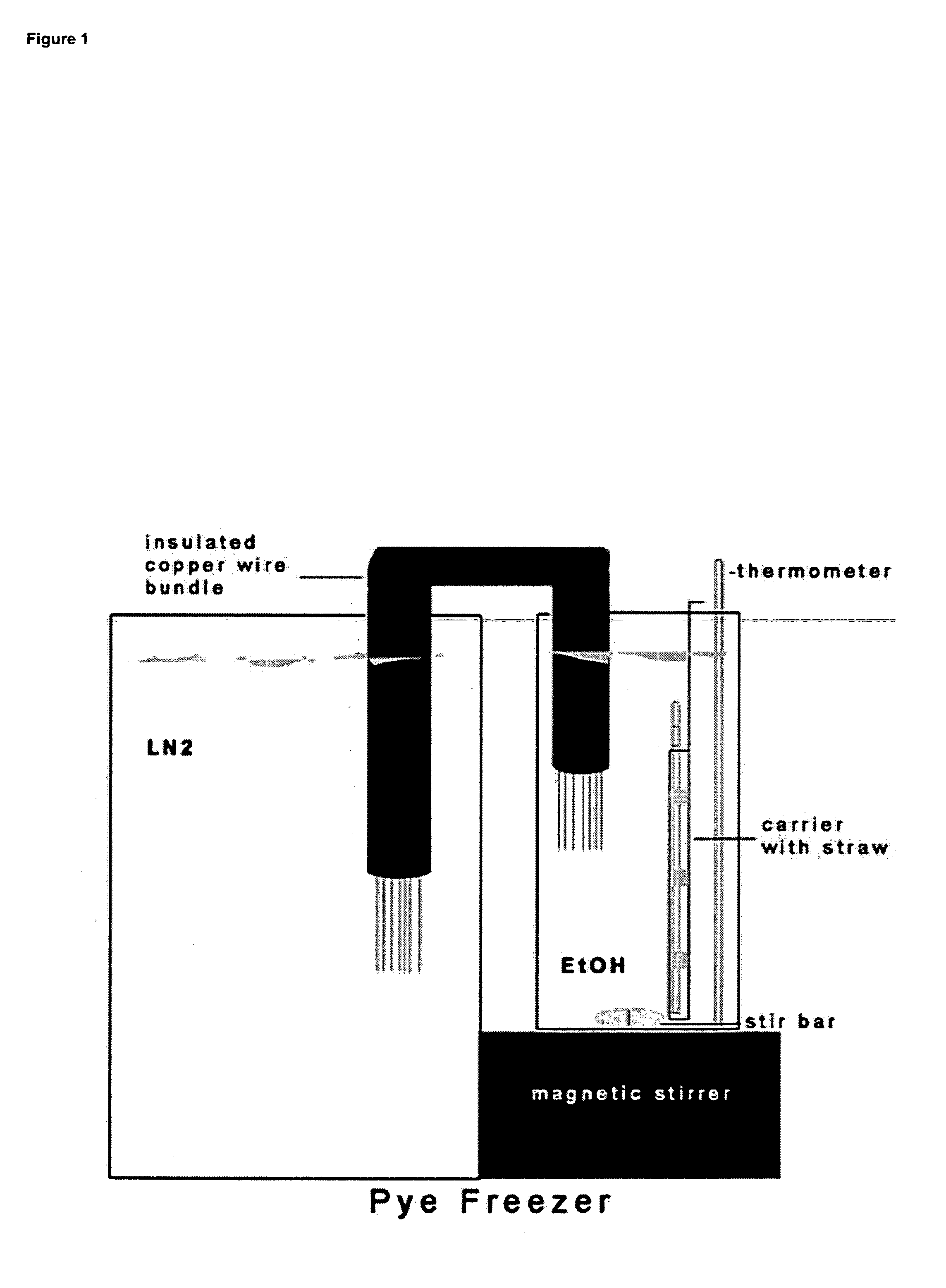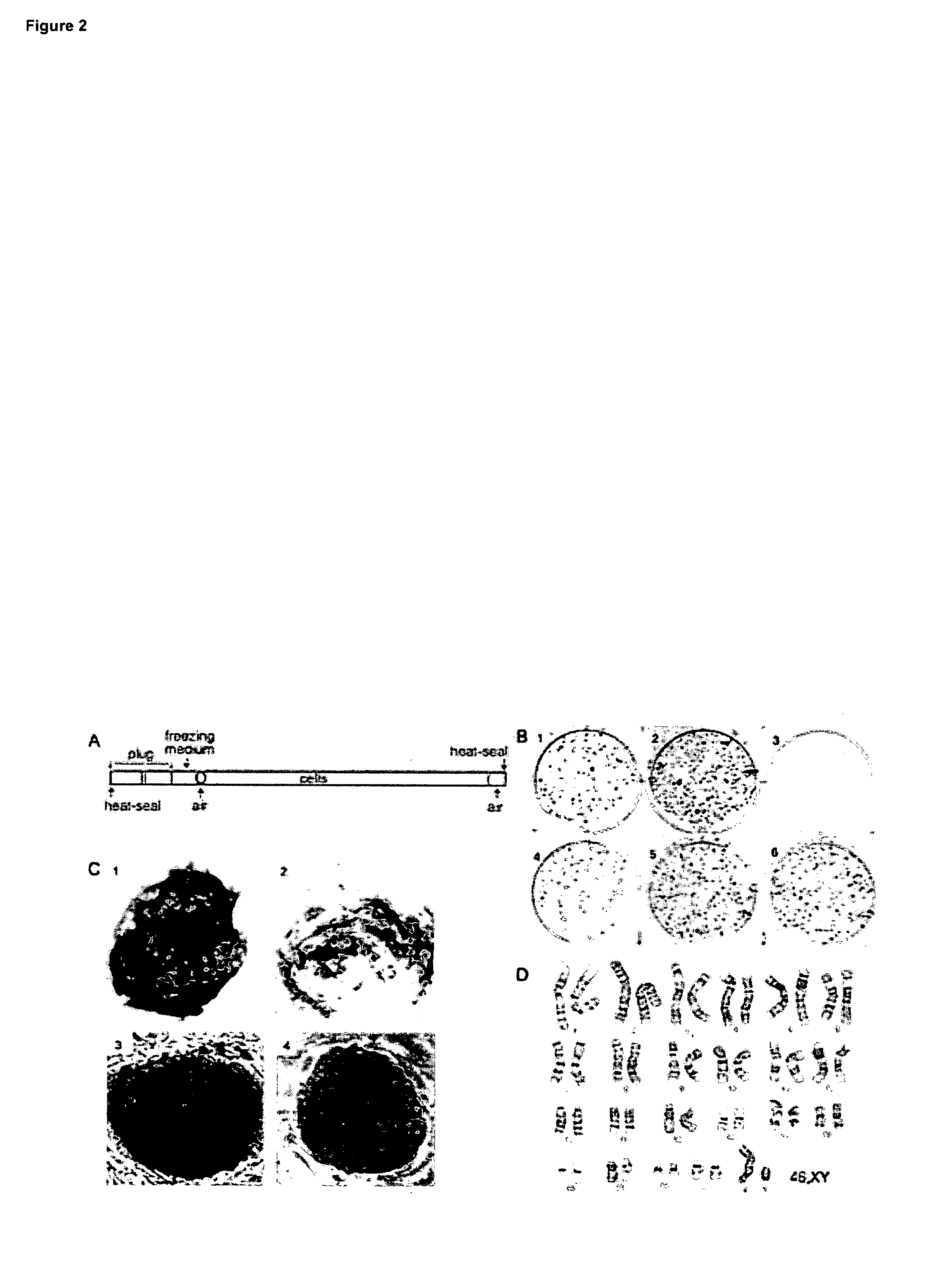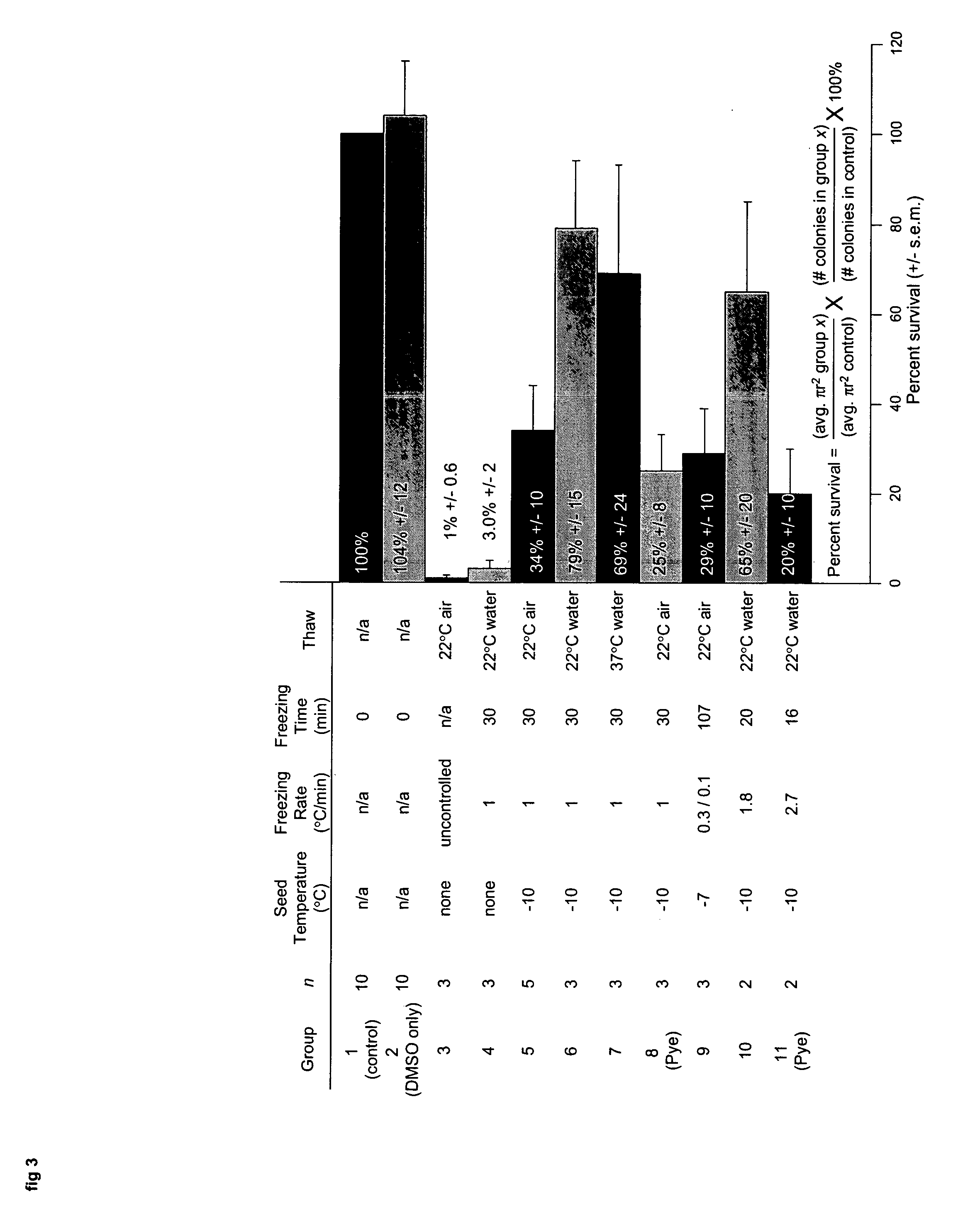Cryopreservation of primate embryonic stem cells
a technology of embryonic stem cells and cryopreservation, which is applied in the field of cryopreservation of primate embryonic stem cells, can solve the problems of the inability to predict the effect of a candidate drug on human cells, and the inability to predict the action of a candidate drug in vivo based on the response of human cell lines in vitro, and achieves high viability
- Summary
- Abstract
- Description
- Claims
- Application Information
AI Technical Summary
Benefits of technology
Problems solved by technology
Method used
Image
Examples
example 1
Controlled-Rate Freezing of Human ES Cells
[0041]A significant obstacle to using human embryonic stem cells (hESC) arises from extremely poor survival associated with freezing, typically in the range of 1%. The data provided herein provides a method where a slow, controlled-rate freezing technique is used. Using a combination of surviving colony number and colony diameter, survival was determined relative to untreated hESC. Using a DMSO cryoprotectant, an −80% survival following slow, controlled-rate cooling was achieved. The critical factors were an ice crystal seed (at −7 to −10° C.), a freeze rate between 0.3 and 1.8° C. per minute and a rapid thaw rate using room temperature water. An inexpensive controlled-rate freezing device was compared to a commercial machine and was shown to allow equivalent survival. Slow, controlled-rate cooling allows a rapid, simple and reproducible means of cryopreserving hESC.
[0042]We have tested various parameters that are known to be important for s...
PUM
| Property | Measurement | Unit |
|---|---|---|
| temperature | aaaaa | aaaaa |
| temperature | aaaaa | aaaaa |
| temperature | aaaaa | aaaaa |
Abstract
Description
Claims
Application Information
 Login to View More
Login to View More - R&D
- Intellectual Property
- Life Sciences
- Materials
- Tech Scout
- Unparalleled Data Quality
- Higher Quality Content
- 60% Fewer Hallucinations
Browse by: Latest US Patents, China's latest patents, Technical Efficacy Thesaurus, Application Domain, Technology Topic, Popular Technical Reports.
© 2025 PatSnap. All rights reserved.Legal|Privacy policy|Modern Slavery Act Transparency Statement|Sitemap|About US| Contact US: help@patsnap.com



